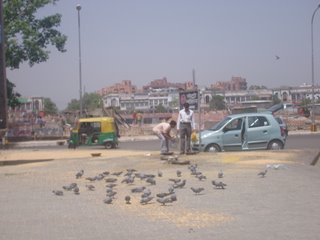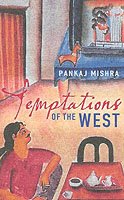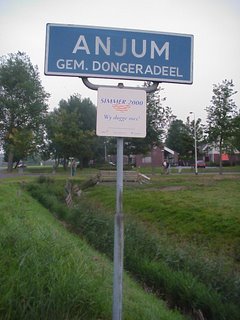Every time there is a survey of unquantifiable traits like happiness and courtesy, we react as if someone has pricked a needle in our inflated ego of self-imagined humility or cast a stone at our glasshouse of laugh riots.
31 out of 34 in courtesy? 132 in Happiness Planet Index, the worst in the region? Could the rankings get anymore dismal?
The happiness rankings tell us that Singapore is a melancholy state and its black mood is shared by millions of its citizens.
In reaction, some sigh with despondency. Some froth with rage. Others try to debate and indulge in some introspection. Why are we what we are?
The question is: Is perception more real than reality? Do these rankings really mean anything? How does one ensure that a few citizen’s bad mood don’t take down a country’s ranking by several points?
Let us go beyond Singapore and look at a particular example.
As per the courtesy survey, Mumbai was ranked as the rudest city on earth. Mumbaikers were obviously not mighty pleased with their ranking but they grinned and bore it. And when the opportunity arose, recently during the July 11 train bomb blasts, they showed their true mettle. They went beyond courtesy. They demonstrated that humanity was alive and kicking even in the rudest city on earth.
I think, of all things, humanity matters most. It is the kernel of our civilization.
Singaporeans have also demonstrated their humane side during the tsunami two years ago. They broke all previous donation records in a short period of time. Every year they donate millions of charity dollars. That is quite commendable.
Coming back to the main issue, I frankly feel that happiness is overrated. All this song and dance about happiness is overblown.
Happiness is so mercurial. We don’t really know much about this animal.
A child beggar cries and begs at a Mumbai traffic light. He succeeds in creating enough pathos in you. You give him a coin and move on. You feel happy because you think you helped someone. You don’t look back. If you did you would know you’d been conned. The crying kid would be smiling on your back.
But, is his smile genuine? Is he genuinely happy? Who knows? And if you knew that he’d conned you with his theatrics, wouldn’t your happiness evaporate then and there?
Happiness is like God. If you went out in search of happiness, you won’t find it anywhere. Like God, it lives within your heart and you will have to find it there.
I will give you another example. When I was coming to Singapore, I was warned. Singaporeans don’t smile. They don’t laugh.
When I came here, I saw something else. One has to be simply blind not to see Singaporeans smile and laugh. Some Singaporeans prefer to maintain a reserved attitude though. In no city you will find all the citizens smiling and laughing all of the time. Singapore is no different.
But why are Singaporeans perceived to be so unhappy? I think there is a reason.
In just four decades, Singapore has leapfrogged from bullock carts to A380. It is no laughing achievement. This country’s success is a testimony of its people’s determination because it is people who make countries.
More precisely, it is hardworking citizens with aims, ambitions and goals who make successful countries.
Singapore is not built on tradition but on drive. Singaporeans display a sense of purpose in their day-to-day lives and so they seem to be humourless in public.
But the truth as we know is this: Happiness is a state of mind. Most often, we don’t know if we are happy but we sure know if were happy at some point of time. Right now is the time to act, to move on, and to live and let live. Happiness will follow.
Sunday, July 23, 2006
On books
We know that bad news is good news. But is it true for books as well? Now an author has made the claim that bad reviews could actually augur good business. Read it all here.
Technology is really changing the way books are being produced and consumed (yes, consumed and not read, not necessarily). Now you can create your own book online with all the pictures, and you yourself are the author and designer of the book. Interested? It's all here.
Technology is really changing the way books are being produced and consumed (yes, consumed and not read, not necessarily). Now you can create your own book online with all the pictures, and you yourself are the author and designer of the book. Interested? It's all here.
Thursday, July 20, 2006
Virgin’s Devi triumphant in the US

Indian filmmaker Shekhar Kapur’s comic book warrior Devi has a lot riding on her slender, but strong shoulders. Not only does Devi have to combat a fallen dark God called Bala; she is now the champion for Indian superheroes drawn from ancient mythology in lands that grew up on Superman and Catwoman.
In January this year, Virgin Atlantic boss Richard Branson teamed up with US-based motivational guru Deepak Chopra and Shekhar Kapur to create an Indian equivalent of stylised, futuristic Japanese-style cartoon books known as manga. The three-way joint venture is also aimed at producing cartoon films. Virgin just rolled out its first comic book — Devi created by Kapur and artist Mukesh Singh — in stores across the US.
Devi has sold over 10,000 copies in the United States in the first two weeks since publication and the Virgin Comics reincarnation of the Indian Goddess is heading for cult status.
Read the full text here.
Why bother with Patrick White?
Sometime ago, a British newspaper did it with one of Naipaul's books. Now, an Australian newspaper has pulled the trick off with an Australian Nobel prize winning novelist, Patrick White. The results are similar. Intrigued? Read on:
HE is the nation's most lauded novelist, our only Nobel prize-winning writer, twice a winner of the Miles Franklin award and three times the Australian Literature Society's Gold Medallist. Yet without his name on the cover, Patrick White's work is apparently of little value to Australia's publishing industry.
Inquirer submitted, under a pseudonym, chapter three of White's The Eye of the Storm to 12 publishers and agents. This novel clinched his Nobel Prize in Literature in 1973, with the judges describing it as one of his most accomplished works.
Not one reader recognised its literary genius, and 10 wrote polite and vaguely encouraging rejection letters. The highest praise was "clever". A low point was a referral to a "how to" book on writing fiction.
Pan Macmillan referred the author to writers' workshops; Mark Latham's agent, Mary Cunnane, recommended the author improve by reading Penguin Books' The Art of Writing, for hints on character and form. Text Publishing, which prides itself on finding and publishing Australian literature, sent back a form rejection letter and HarperCollins flicked it back unread.
For the experiment, the title of the manuscript was tweaked to become The Eye of the Cyclone, and an anagram was used for the author's name, Wraith Picket. And the age chosen for the 33-year-old father of one was the number of years that have passed since White wrote the novel.
Cunnane is a respected agent of 30 years' experience. She wrote: "Alas, the sample chapter, while (written) with energy and feeling, does not give evidence that the work is yet of a publishable quality.
"I suggest you get a copy of David Lodge's The Art of Fiction (Penguin) and absorb its lessons about exposition, dialogue, point of view, voice and characterisation."
Nicholas Hudson, of Hudson Publishing, found the work perplexing. "What I read left me puzzled. I found it hard to get involved with the characters, so it was not character-driven, nor in the ideas, so it was not idea-driven. It seemed like a plot-driven novel whose plot got lost through an aspiration to be a literary novel. It was very clever, but I was not compelled to read on," he wrote.
Read the full article here.
HE is the nation's most lauded novelist, our only Nobel prize-winning writer, twice a winner of the Miles Franklin award and three times the Australian Literature Society's Gold Medallist. Yet without his name on the cover, Patrick White's work is apparently of little value to Australia's publishing industry.
Inquirer submitted, under a pseudonym, chapter three of White's The Eye of the Storm to 12 publishers and agents. This novel clinched his Nobel Prize in Literature in 1973, with the judges describing it as one of his most accomplished works.
Not one reader recognised its literary genius, and 10 wrote polite and vaguely encouraging rejection letters. The highest praise was "clever". A low point was a referral to a "how to" book on writing fiction.
Pan Macmillan referred the author to writers' workshops; Mark Latham's agent, Mary Cunnane, recommended the author improve by reading Penguin Books' The Art of Writing, for hints on character and form. Text Publishing, which prides itself on finding and publishing Australian literature, sent back a form rejection letter and HarperCollins flicked it back unread.
For the experiment, the title of the manuscript was tweaked to become The Eye of the Cyclone, and an anagram was used for the author's name, Wraith Picket. And the age chosen for the 33-year-old father of one was the number of years that have passed since White wrote the novel.
Cunnane is a respected agent of 30 years' experience. She wrote: "Alas, the sample chapter, while (written) with energy and feeling, does not give evidence that the work is yet of a publishable quality.
"I suggest you get a copy of David Lodge's The Art of Fiction (Penguin) and absorb its lessons about exposition, dialogue, point of view, voice and characterisation."
Nicholas Hudson, of Hudson Publishing, found the work perplexing. "What I read left me puzzled. I found it hard to get involved with the characters, so it was not character-driven, nor in the ideas, so it was not idea-driven. It seemed like a plot-driven novel whose plot got lost through an aspiration to be a literary novel. It was very clever, but I was not compelled to read on," he wrote.
Read the full article here.
Krrish and the Spirit of Asian Cinema

July has been a gloomy month for Mumbai. First, the torrential rains almost brought life in Mumbai to a grinding halt. Then came the July 11 train bomb blasts, claiming over 200 innocent lives.
But amazingly, true to the irrepressible Mumbai spirit, the city got back on its feet the very next day. The show must go on!
Buoyed by the same indomitable spirit of Mumbai, the home of Bollywood, is India's first superhero movie, Krrish, which has been spreading some cheer at home and abroad. The good news is that it has been declared a super hit in India.
Despite mixed reviews, the film has surpassed all commercial expectations. The rain-washed Mumbaikers have given their shower of approval to the fantasy flick, despite having to choose between the Bollywood US$10-million-Krrish ($15.9 million) and the Hollywood heavyweight Superman Returns (US$200 million). It is also currently running all across the United States and according to reports, has been doing especially well in Connecticut, Massachusetts, New York, Pennsylvania, North Carolina and Illinois.
A beaming Mr Rakesh Roshan, the director-producer of this sequel to an earlier smash hit Koi Mil Gaya (I Found Someone, 2003), claimed in an interview that the film had made box office history by taking in the biggest ever opening in India. Not just that, the film is on its way to Harvard University as it has been shortlisted for an international-level case study.
Now that the verdict on Krrish is out, Singapore can take pride in its success. Krrish was extensively shot here under the Singapore Tourism Board's (STB) $10-million Film in Singapore! scheme, launched to generate more awareness of Singapore in countries like India — one of Singapore's top 10 visitor-generating markets.
Read the full article at Today.
Monday, July 17, 2006
The Myth of a New Delhi

FOR the last 10 years, New Delhi had been my home until I left for Singapore two years ago.
My friends, who visited New Delhi recently brought me amazing news about the city.
Delhi is transformed, they say. It has developed like never before; people are making lots of money, getting unbelievably high salaries and buying cars and houses like there's no tomorrow.
Impressive, I thought.
Read the full piece here.
Saturday, July 08, 2006
The Myth of the New India

Pankaj Mishra likes to swim against the tide. When the world is singing paens to India's economic miralcle, Mishra writes an op-ed in the NYT questioning the fundamentals behind the assumption of India's miracle. And he marshalls some convincing data to prove his point:
"INDIA is a roaring capitalist success story." So says the latest issue of Foreign Affairs; and last week many leading business executives and politicians in India celebrated as Lakshmi Mittal, the fifth richest man in the world, finally succeeded in his hostile takeover of the Luxembourgian steel company Arcelor. India's leading business newspaper, The Economic Times, summed up the general euphoria over the event in its regular feature, "The Global Indian Takeover": "For India, it is a harbinger of things to come — economic superstardom."
"This sounds persuasive as long as you don't know that Mr. Mittal, who lives in Britain, announced his first investment in India only last year. He is as much an Indian success story as Sergey Brin, the Russian-born co-founder of Google, is proof of Russia's imminent economic superstardom."
"...The main reason for this is that India's economic growth has been largely jobless. Only 1.3 million out of a working population of 400 million are employed in the information technology and business processing industries that make up the so-called new economy."
I agree with Mishra's conclusion--we need to do a lot of work before we can rightfully claim that the 21st century is the century of India: "Many serious problems confront India. They are unlikely to be solved as long as the wealthy, both inside and outside the country, choose to believe their own complacent myths."
Friday, July 07, 2006
What's in a name?

Probably a lot. That's why some places are wiped off the map, says Mark Monmonier in his book, From Squaw Tit to Whorehouse Meadow.
Mark says: "'Nigger's were abolished in the US in 1962. 'Squaw's and 'Jap's went in the decade following. The erasure of 'Dago's, 'Chink's and 'Wop's has been a more piecemeal affair. In From Squaw Tit to Whorehouse Meadow, Mark Monmonier reads map names to diagnose the racial, political and moral tensions which enmesh them. A toponym (the name of any feature that appears on a map), he argues, is both a legacy and an argument waiting to happen."
Name of places do fascinate me. If you go into the heartland of India, or for that matter, any other country, you will notice how the names of the places are linked with local language and folk lore. These days in the metros, however, you will find more anglicised names than ever before. In Delhi's suburb Gurgaon, for example, you will find a lot of apartment buildings named as Ridgewood and Hill View Apartments in Pocket so and so and Zone so and so.
Sometimes, even your name could have a geographical existence. I was really surprised to find out that my name stood for two different places in different parts of the world: Zafar in Oman and Anjum in the Netherlands. Interesting, isn't it?
Thursday, July 06, 2006
Who's the voice of this generation?

Asks Lev Grossman in this Time magazine article.
" David Foster Wallace is 44 years old. Jonathan Franzen is 46. Jonathan Lethem, 42. Michael Chabon, 43. I point that out not to be rude--although I admit it is kind of rude--but because those are the writers that people--people who think about such things, anyway--think of as the young American novelists. And even by the notoriously elastic standards of the literary world--the only place on earth where you can still be a wunderkind at the age of 30--42 is not especially youthful. Wallace, Franzen, Lethem and Chabon may be great writers, but one thing they are not is young writers."
He goes on and then concludes:
"That probably gets at some of the truth of it. The world has changed, and the novel has changed with it. Fictional characters just can't get away with being generically white and middle class and male anymore, the way they used to. Not and still be the object of mass identification and adoration the way the Voice has traditionally been. We just don't think about people that way anymore: we're interested in the specifics of their racial and ethnic and historical circumstances, where they came from and who made them that way. If the novelists under 40 have a shared preoccupation, it is--to put it as dryly as possible--immigration. They write about characters who cross borders, from East to West, from Old World to New and back again, and the many and varied tolls they pay along the way. Their shared project, to the extent that they have one, is the revision of the good old American immigrant narrative, bringing it up to code with the realities of our multicultural, transcontinental, hyphenated identities and our globalized, displaced, deracinated lives. It's a literature of multiplicity and diversity, not one of unanimity, and it makes the idea of a unifying voice of a generation seem rather quaint and 20th century. I may love and empathize with the transplanted Bengalis who populate Lahiri's fiction, or Shteyngart's semi-Americanized Russians, or Foer's uprooted Old Worlders or Smith's international extended families. But I would never be so foolish as to mistake any of them for myself."
That's an interesting thought there. Reading experience, in this age of TV and rich media and what not, is not the same any more.
But to think of India in this context, thankfully there are a number of 30 or below 30 something novelists--whether they represent the voice of this generation is a differet matter.
Interestingly, in a poll in the same issue, to see the emergence of a classic novel written by the recent crop of writers, Zadie Smith and Jhumpa Lahiri are on the tops (at least as of now).
Subscribe to:
Comments (Atom)
